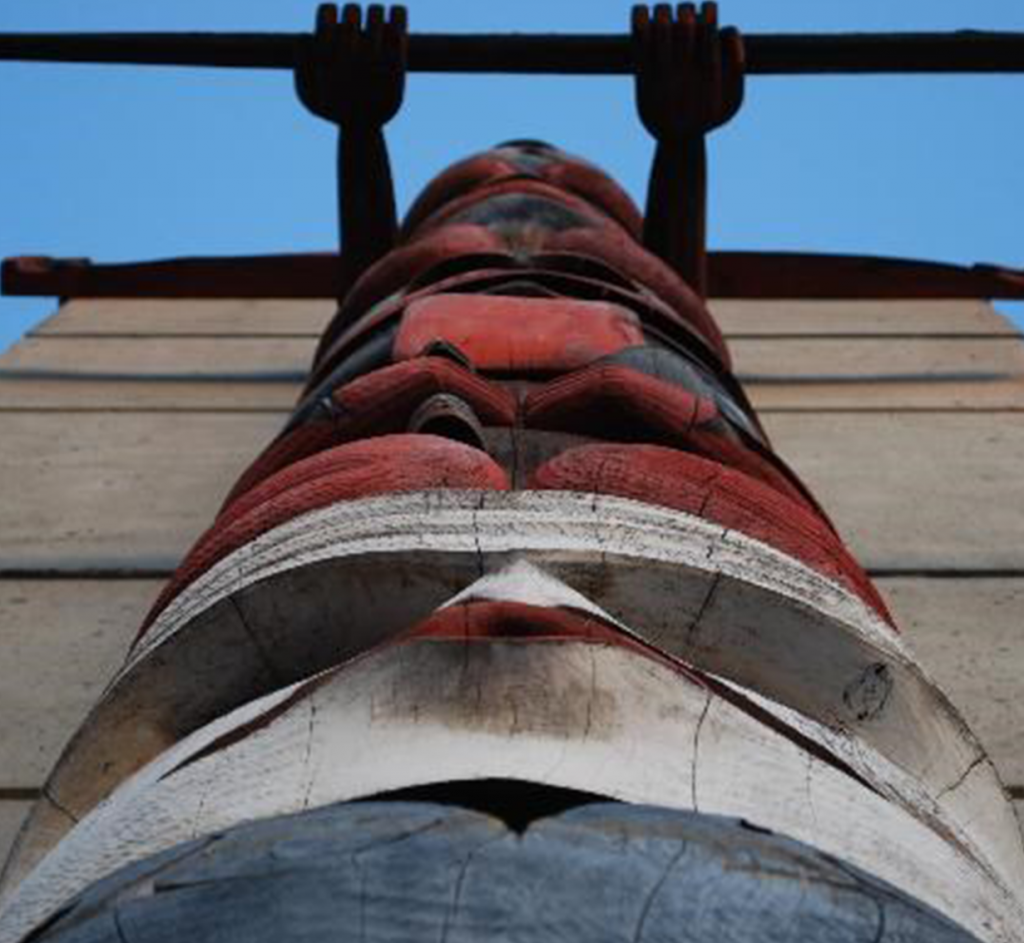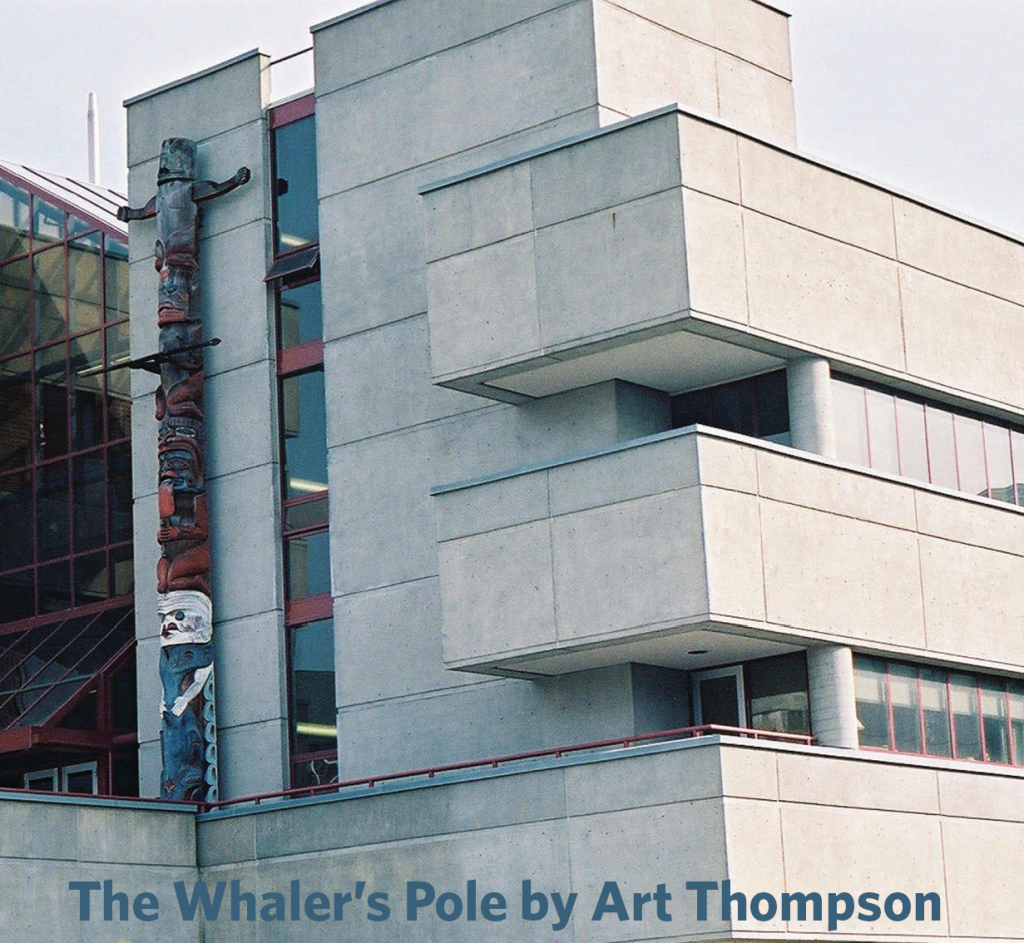On National Aboriginal Day we take a moment to celebrate and honour the rich contributions of Indigenous Peoples.
The Whaler’s Pole was designed and carved by the Nuu Chah Nulth artist Art Thompson (1948-2003), with the assistance of Joe David, Duane Pasco, Gene Brabant, and Glen Wood.
Constructed over two years, from 1981-1982, the pole represents the whaling tradition of the Nuh Chah Nulth peoples.

The Whaler’s Pole
Commissioned by UBC’s Museum of Anthropology, it was raised outside the Douglas T. Kenny Building in 1984. The Kenny Building is located on the traditional, ancestral, unceded territory of the Musqueam people.
Figures from the top to the bottom are the Harpooner, Assistant Whaler, Shaman (with lightening snake tongue representing his power), Puk-Ubs (Whaler returned from drowning), and a grey whale held by Puk-Ubs.

Douglas T. Kenny Building
Dr. Stanley Coren, emeritus professor in the Department of Psychology provides more history on the Whaler’s Pole:
“I thought that members of the Psychology Department might be interested in the rest of the story as to how we managed to get the impressive Art Thompson totem pole which resides to the right of the main entrance of the Kenny Psychology Building,” says Coren. “Over the years I have collected a few pieces of West Coast native art. In the process I got to know some of the indigenous artists—one of whom was Art Thompson. In 1984, the year that we moved into the Kenny Building, I had a conversation with Art. He told me, that as a result of a government grant he and some other artists had been commissioned to carve totem poles for UBC. All of these were eventually erected behind the new Museum of Anthropology. However one of these that he had invested a lot of time in creating was not. This was because it had not been given a proper footing to allow it to be inserted into the ground and anchored there, as tradition requires for totem poles. He had omitted the footing because it was his understanding that the totem was to be placed indoors or near an entrance. He now feared that because of this omission it might never be erected on campus.”
Coren adds “I was intrigued and try to gather more information. Art told me where the totem pole was and I went to Peter Suedfeld, who was then head of the Psychology Department, and told him about the situation. The two of us then tramped down into a wooded area off of Marine Drive, where the carvers’ shed was located. We then peeked into the window to see this elegant totem pole lying there. The information which we had said that it tells the story of the ghost of a native fisherman who was killed while hunting a whale. We both thought that the tall open space beside the main entrance to our new building would be a perfect place for this handsome piece of art. From that moment on, the campaign became Peter’s. He found that the totem pole was still technically property of the museum. He then contacted the curator who admitted that the museum had no plans for it since all of the contemporary totem poles that they had commissioned were now displayed outside behind the main gallery near the longhouse. With the information that he had gleaned from my chat with Art Thompson, along with Art’s expressed desire to have the piece displayed, Peter finally managed to secure that totem pole for our building. Peter and I both believed that it would add a certain distinction and west coast flavour to the building. In the end, Art Thompson was very pleased to see the prominent placement of his work of art. He later invited me to a potlatch to thank me for the small part that I had played in finding a “home” for The Whalers’ Totem Pole.”

 Follow
Follow